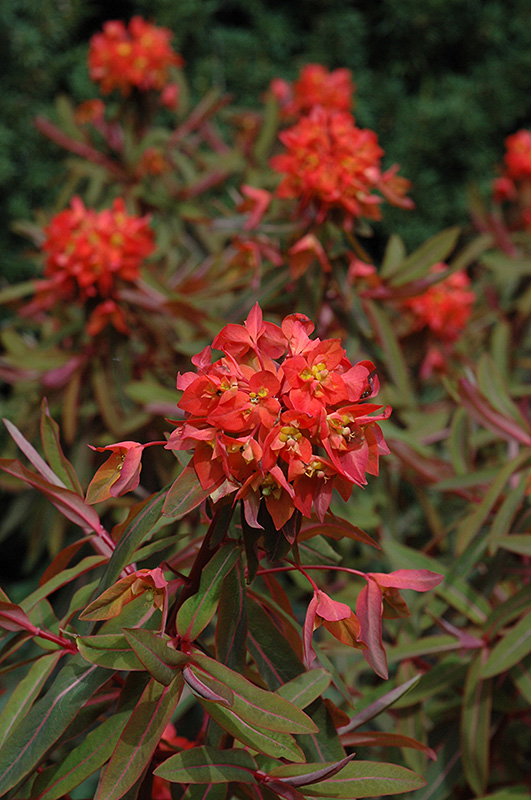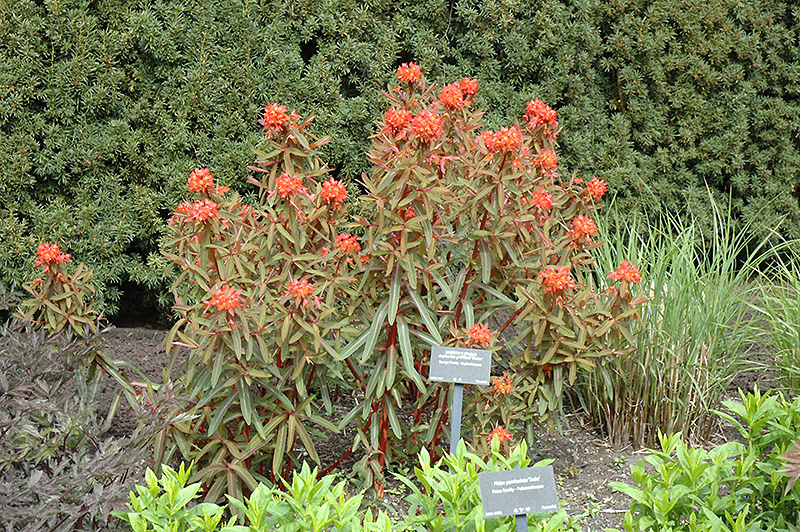Plant Finder
Dixter Spurge*
Euphorbia griffithii 'Dixter'
* This is a "special order" plant - contact store for details
Height: 30 inches
Spread: 30 inches
Sunlight:
![]()
![]()
Hardiness Zone: 3b
Other Names: Griffith's Spurge
Description:
This is an easy and reliable grower, forming a bushy mound that appears like a small shrub; firey orange bracts enveloping yellow flowers appear in early summer and continue for many weeks; divide in spring every 4 or 5 years; sap is toxic
Ornamental Features
Dixter Spurge has masses of beautiful cymes of yellow flowers with orange bracts at the ends of the stems from late spring to late summer, which are most effective when planted in groupings. Its attractive narrow leaves emerge coppery-bronze in spring, turning green in color with distinctive coral-pink veins. As an added bonus, the foliage turns a gorgeous brick red in the fall. The coral-pink stems are very colorful and add to the overall interest of the plant.
Landscape Attributes
Dixter Spurge is an herbaceous perennial with a mounded form. Its medium texture blends into the garden, but can always be balanced by a couple of finer or coarser plants for an effective composition.
This is a relatively low maintenance plant, and is best cleaned up in early spring before it resumes active growth for the season. Deer don't particularly care for this plant and will usually leave it alone in favor of tastier treats. It has no significant negative characteristics.
Dixter Spurge is recommended for the following landscape applications;
- Mass Planting
- Border Edging
- General Garden Use
Planting & Growing
Dixter Spurge will grow to be about 30 inches tall at maturity, with a spread of 30 inches. It grows at a fast rate, and under ideal conditions can be expected to live for approximately 10 years. As an herbaceous perennial, this plant will usually die back to the crown each winter, and will regrow from the base each spring. Be careful not to disturb the crown in late winter when it may not be readily seen!
This plant does best in full sun to partial shade. It is very adaptable to both dry and moist growing conditions, but will not tolerate any standing water. It is not particular as to soil pH, but grows best in sandy soils. It is somewhat tolerant of urban pollution. This is a selected variety of a species not originally from North America, and parts of it are known to be toxic to humans and animals, so care should be exercised in planting it around children and pets. It can be propagated by division; however, as a cultivated variety, be aware that it may be subject to certain restrictions or prohibitions on propagation.
* This is a "special order" plant - contact store for details

